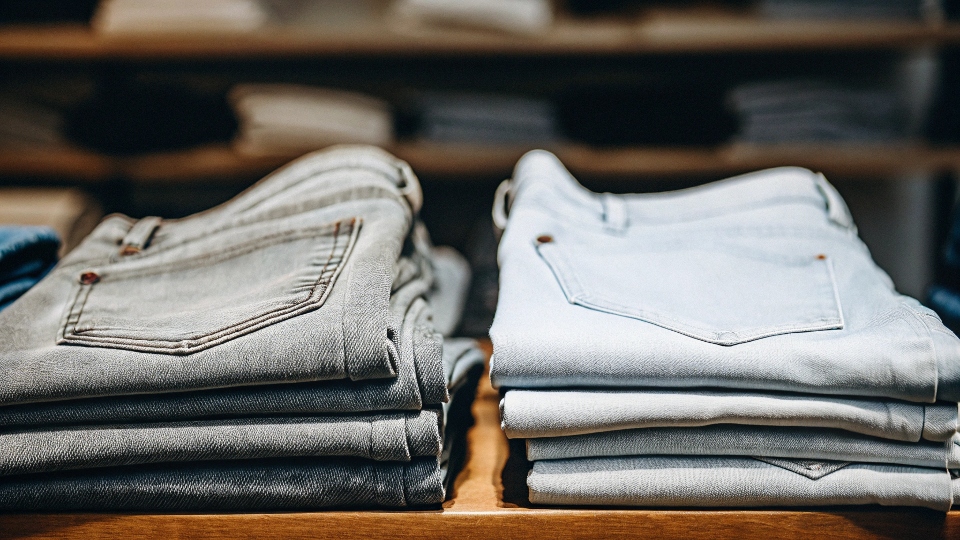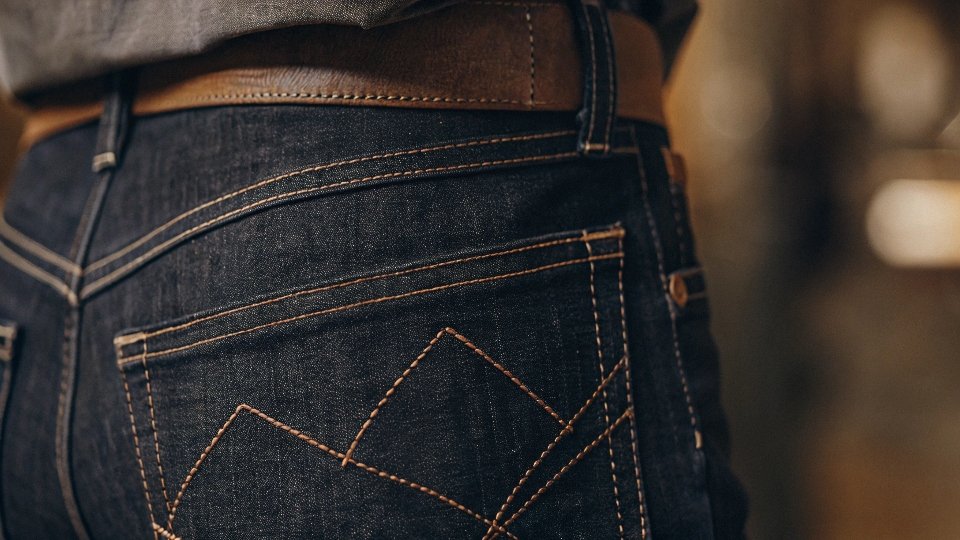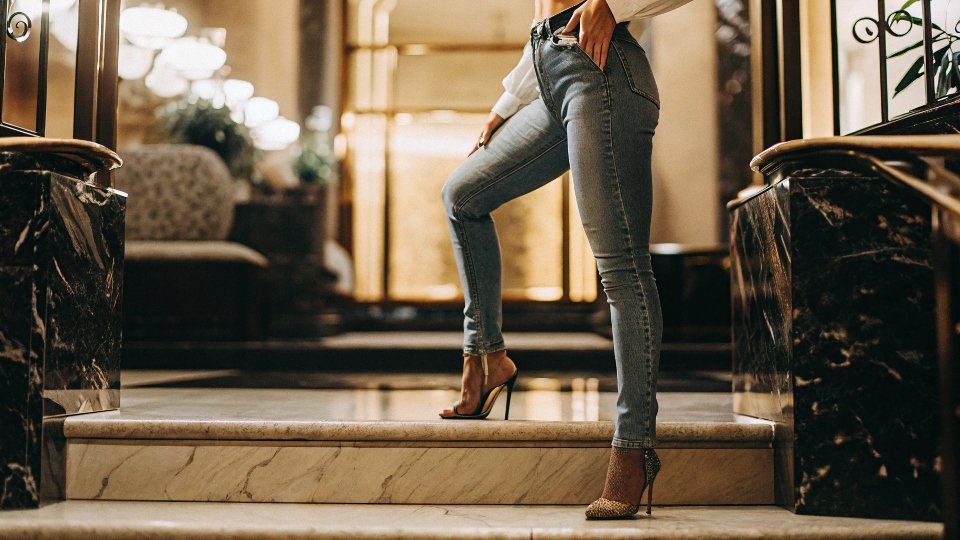You see the price tag on a pair of 7 For All Mankind jeans and pause. They look nice, but are they really worth hundreds of dollars more than other brands?
7 For All Mankind jeans are expensive because they pioneered the premium denim market. Their price reflects a combination of higher-quality stretch fabrics, a famously flattering fit, complex wash techniques, and being manufactured in the USA, all reinforcing their position as a luxury brand.
This question takes me back to the early 2000s. From my perspective in the denim industry, that era was a gold rush. The insight you provided is spot on—the premium denim phase we once had is largely over. Brands like 7 For All Mankind didn't just sell jeans; they sold a new category. They used superior materials and complex, expensive washes that couldn't be easily copied.
But as I've seen in my own factory, the world caught up. The techniques were learned and automated overseas, and the fabrics were mimicked. This crashed the value, but the high price often remains, a relic of a time when these jeans were truly in a class of their own.
What is so special about 7 jeans?
At first glance, they just look like a well-made pair of jeans. So why did people become so obsessed with them, creating an entire new market for premium denim?
7 For All Mankind jeans were special because they revolutionized women's denim1 with a focus on fit and fabric. They introduced stretch blends that were both comfortable and flattering, eliminating the waist gap common in other jeans at the time.
Before 7 For All Mankind launched in 2000, "premium" jeans weren't really a thing for most people. Jeans were functional. The founders of 7FAM saw a huge gap in the market, especially for women. Jeans just didn't fit well. They were often stiff and unforgiving. 7FAM's big innovation was using high-quality denim with a significant amount of stretch. It sounds simple now, but it was groundbreaking.
This new fabric allowed them to create a fit that hugged the body without being restrictive. For the first time, a woman could bend over without a huge gap forming at the back of her waistband. They combined this incredible fit with sophisticated, hand-finished washes2 done in Los Angeles. These washes had subtle fading and whiskering that made the jeans look authentically worn-in and luxurious. This combination of fit, feel, and finish was something no one else was doing at that price point.
| Feature | Standard Jeans (Pre-2000) | 7 For All Mankind (Early 2000s) |
|---|---|---|
| Fabric | 100% Cotton, rigid and stiff | Cotton/Spandex blend, soft with stretch |
| Fit | Straight, often gapped at waist | Contoured, curve-hugging, no gap |
| Wash | Basic stone wash or raw | Complex, hand-sanded, subtle washes |
| Manufacturing | Mass-produced overseas | Made in the USA (Los Angeles) |
Is Seven For All Mankind a luxury brand?
You see them in high-end department stores next to designer labels. But does that automatically make them a true luxury brand, or are they something else entirely?
Yes, Seven For All Mankind is considered a foundational "premium luxury" denim brand. It created and led this new category, elevating jeans from simple workwear to a high-priced, aspirational fashion item that commanded a luxury price point.
This is where the core of your insight is so important. 7FAM defined the premium denim category, which sits between mass-market brands and true high-fashion houses. In its golden age, the "premium" label was justified by three key things. First, the fabric. They used heavy, 10-ounce-plus cotton or cotton-spandex blends, while cheaper jeans were already using polyester.
Second, the manufacturing. They produced in the USA, which meant higher costs but also higher quality control and access to expert workers. Third, the washes. They developed expensive, hand-finished washes that overseas factories simply hadn't seen yet. These factors created a real, tangible difference.
But as you pointed out, the market changed. Denim mills all over the world learned to mimic these premium fabrics. The wash houses in places like China and Turkey learned all the techniques, then found ways to automate them, making them cheaper. To the average consumer, the new jeans from mass-market brands started to look the same, even if they weren't.
The perceived value of the premium brands crashed because their unique advantages were copied. So while 7FAM is still positioned as a luxury brand, the competitive landscape that once made them unique has completely eroded.
What's the most expensive brand of jeans?
You think the price of 7 jeans is high, but the world of denim has a much higher ceiling. What makes a pair of jeans cost as much as a used car?
While 7FAM is expensive, the most expensive jeans come from high-fashion designer brands like Gucci and Chanel, or niche bespoke brands. Their prices are driven by brand prestige, rare materials, extreme embellishments, and limited production runs.
The price of 7 For All Mankind jeans3 is based on premium positioning. The price of the world's most expensive jeans is based on pure luxury and exclusivity. There is a huge difference. Brands like Gucci, Balmain, or Dolce & Gabbana will take a pair of jeans and treat it like a piece of couture.
They might cover it in thousands of hand-sewn crystals, intricate embroidery, or patchwork made from exotic materials. You are not paying for the denim; you are paying for the brand name and the hours of artistic labor.
Then you have another category: the artisan collectors. These are often Japanese selvedge denim4 brands. They use denim woven on rare, antique shuttle looms, which creates a fabric of incredible character and durability. The jeans are then dyed with natural indigo and sewn by a single master craftsman. For a denim enthusiast like my client Dean, these are the true holy grail. They are expensive because of the rarity of the materials and the incredible skill required to make them. They represent the absolute peak of denim as a craft.
What are 7's jeans called?
You hear people refer to the brand in different ways—"Sevens," "7 jeans." To avoid confusion, what is the official, full name of the company that started it all?
The brand's official name is "7 For All Mankind." It is often shortened in conversation to "Seven jeans" or just "Sevens" by people who are familiar with the brand.
The name itself was a core part of its marketing strategy. The founders based it on a market research finding that the average person owned about seven pairs of jeans. Their goal was to make their brand the one essential pair that everyone—all mankind—needed in their wardrobe. It was an ambitious, aspirational name that perfectly captured the luxury feel they were going for. Besides the name, their most powerful branding tool was on the back of the pants.
The subtle, squiggled "A"-like design stitched onto the back pockets became an instant status symbol in the early 2000s. In an era dominated by celebrity tabloid photos, paparazzi would catch stars wearing these jeans. People could identify the brand from a distance just by that stitching. You weren't just buying a pair of well-fitting pants; you were buying a ticket into an exclusive club. This powerful branding is a major reason they could command such a high price and still do today.
Conclusion
7 For All Mankind jeans are expensive because they created and once dominated the premium denim market5 with superior fit, fabric, and finishing. Their price reflects this legacy, even as the global market has adopted their techniques.
-
Learn about the innovations that changed women's denim and set new industry standards. ↩
-
Explore the process and significance of hand-finished washes in creating unique denim. ↩
-
Discover the unique features that set 7 For All Mankind jeans apart in the premium denim market. ↩
-
Explore the craftsmanship and heritage behind Japanese selvedge denim and its appeal. ↩
-
Learn about the evolution and significance of the premium denim market and its impact on fashion. ↩











